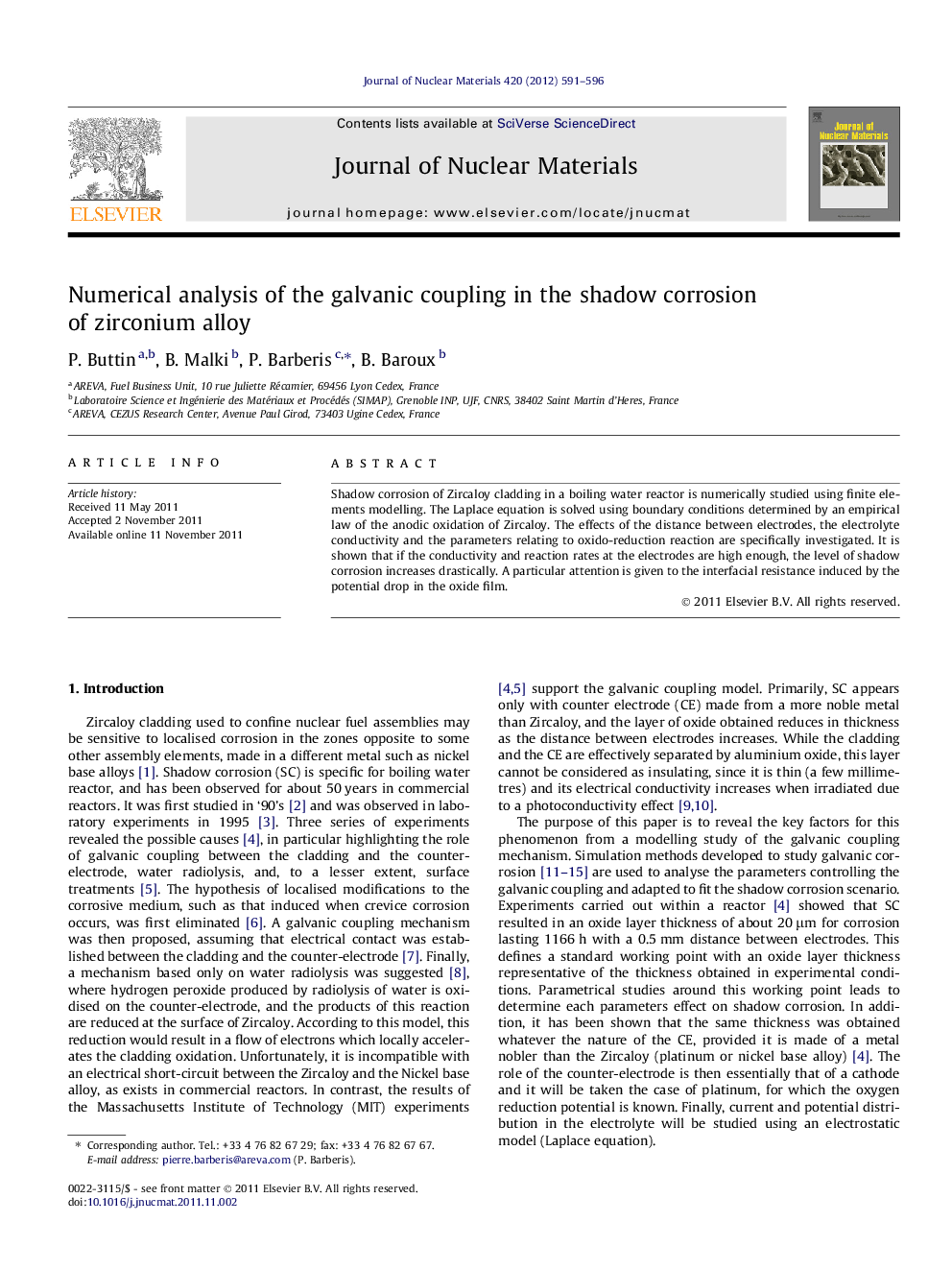| کد مقاله | کد نشریه | سال انتشار | مقاله انگلیسی | نسخه تمام متن |
|---|---|---|---|---|
| 1566509 | 1514226 | 2012 | 6 صفحه PDF | دانلود رایگان |

Shadow corrosion of Zircaloy cladding in a boiling water reactor is numerically studied using finite elements modelling. The Laplace equation is solved using boundary conditions determined by an empirical law of the anodic oxidation of Zircaloy. The effects of the distance between electrodes, the electrolyte conductivity and the parameters relating to oxido-reduction reaction are specifically investigated. It is shown that if the conductivity and reaction rates at the electrodes are high enough, the level of shadow corrosion increases drastically. A particular attention is given to the interfacial resistance induced by the potential drop in the oxide film.
► Numerical simulations of the mechanisms of shadow corrosion in zirconium alloys.
► Impact of the geometrical factors and the electrolyte conductivity on ZrO2 oxide thickness.
► Crucial role of the current-potential law on shadow corrosion profiles.
► Specific role of the interfacial resistance on shadow corrosion profiles.
Journal: Journal of Nuclear Materials - Volume 420, Issues 1–3, January 2012, Pages 591–596